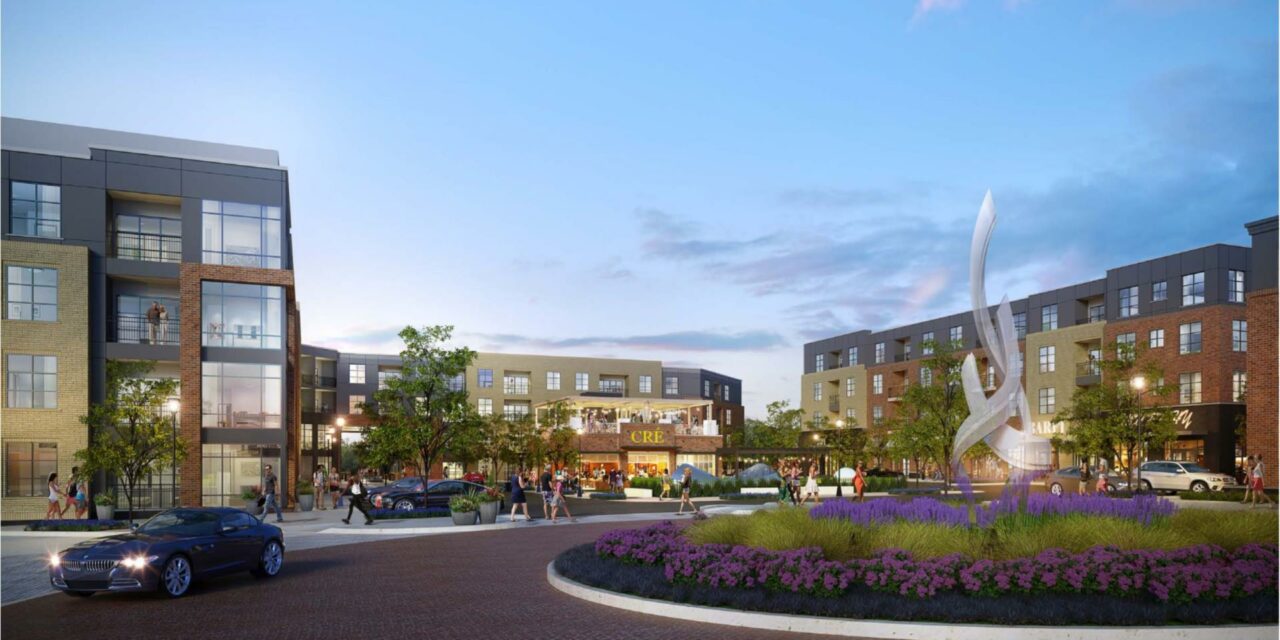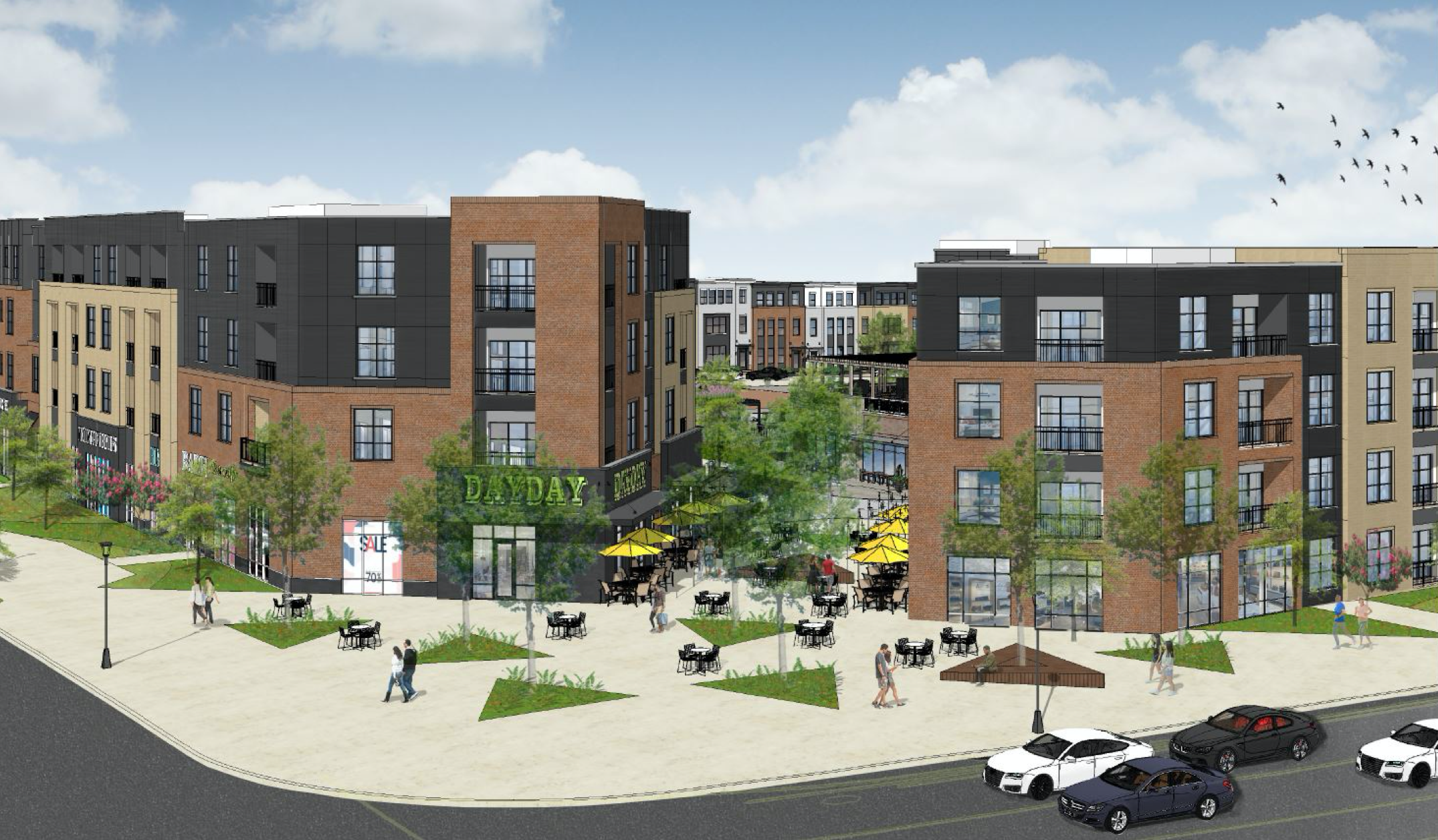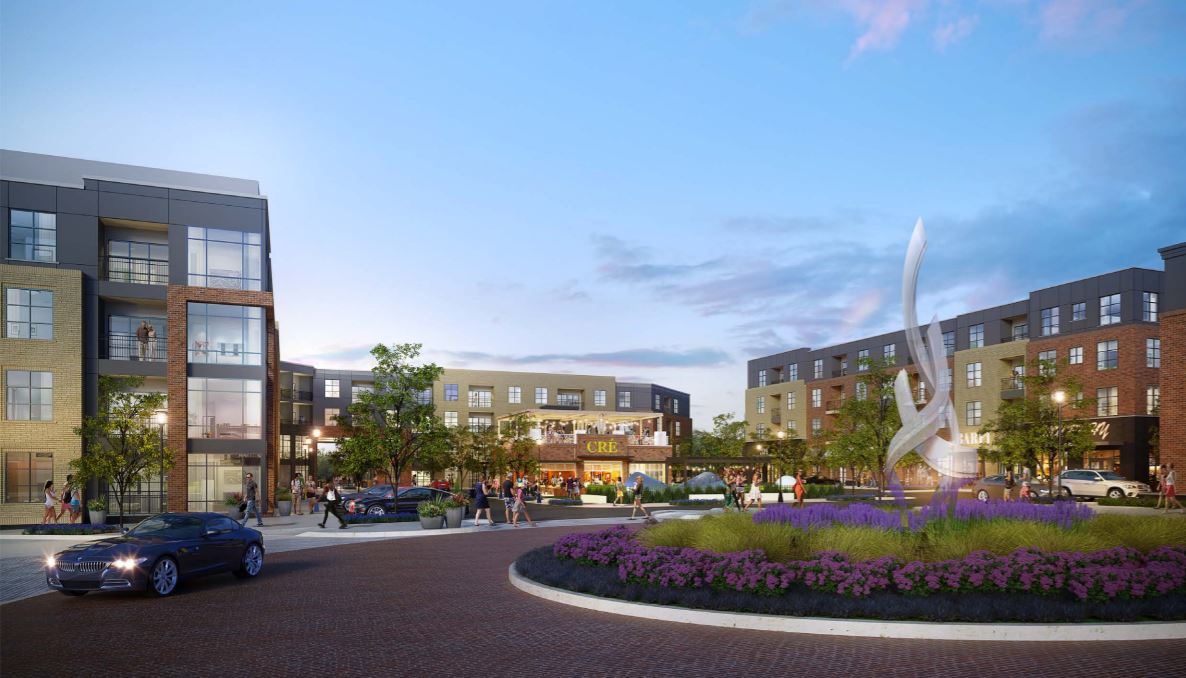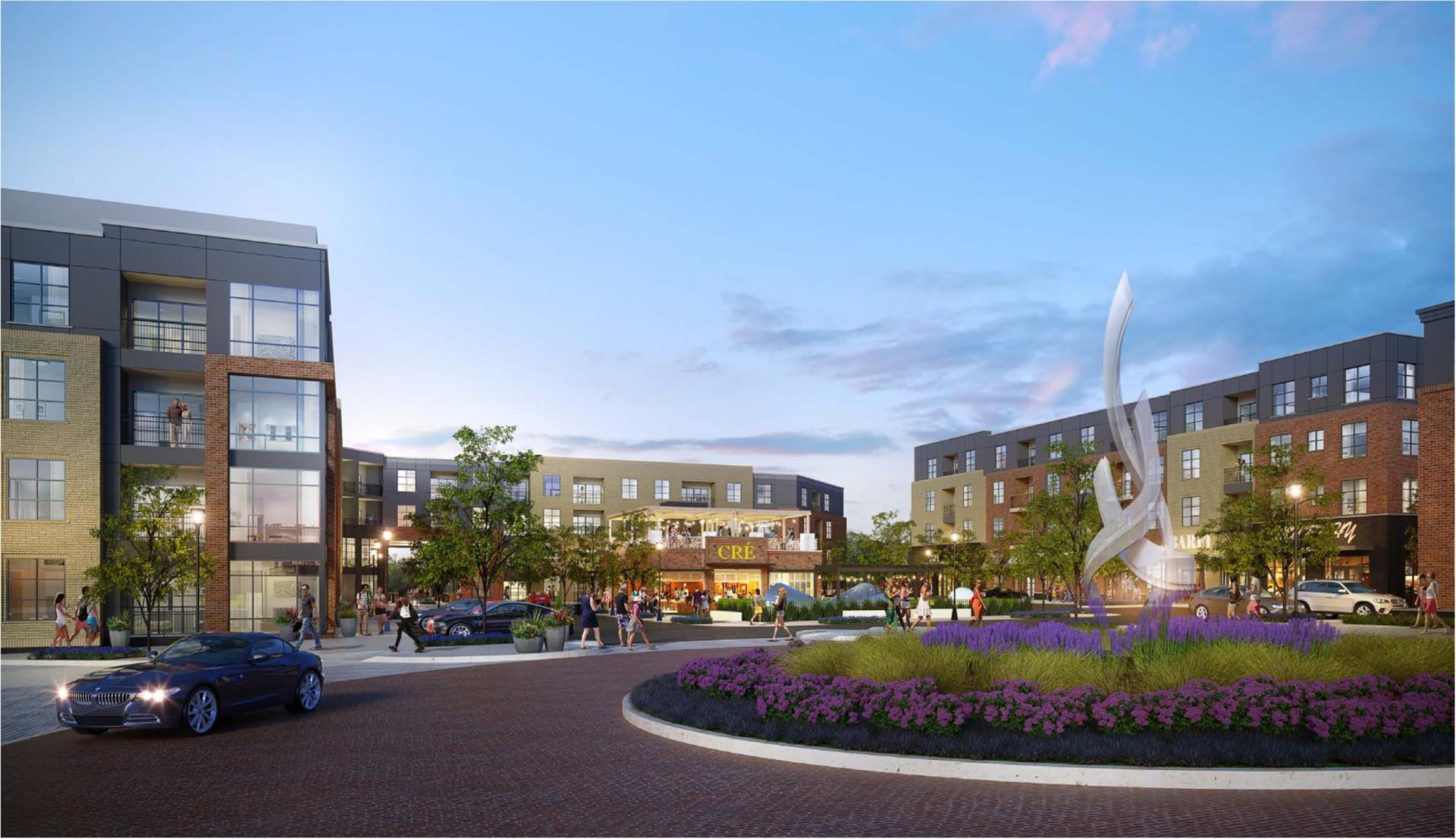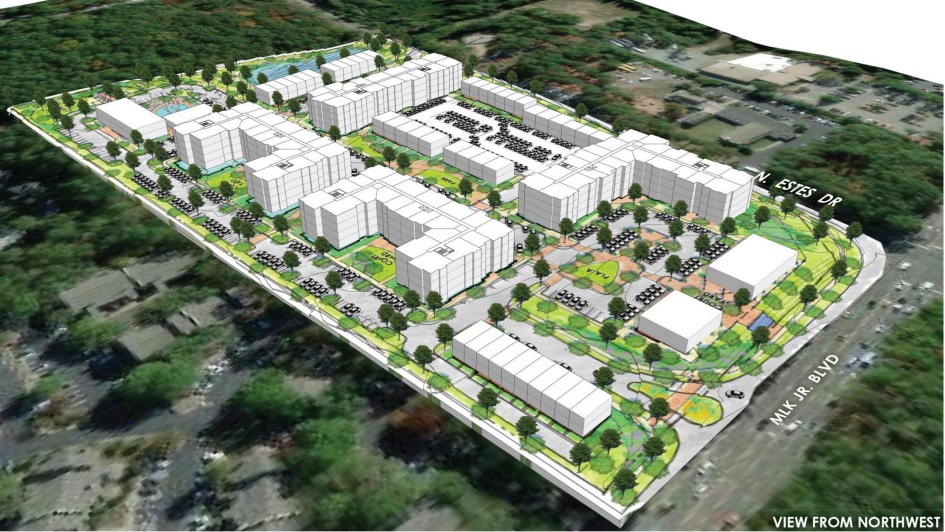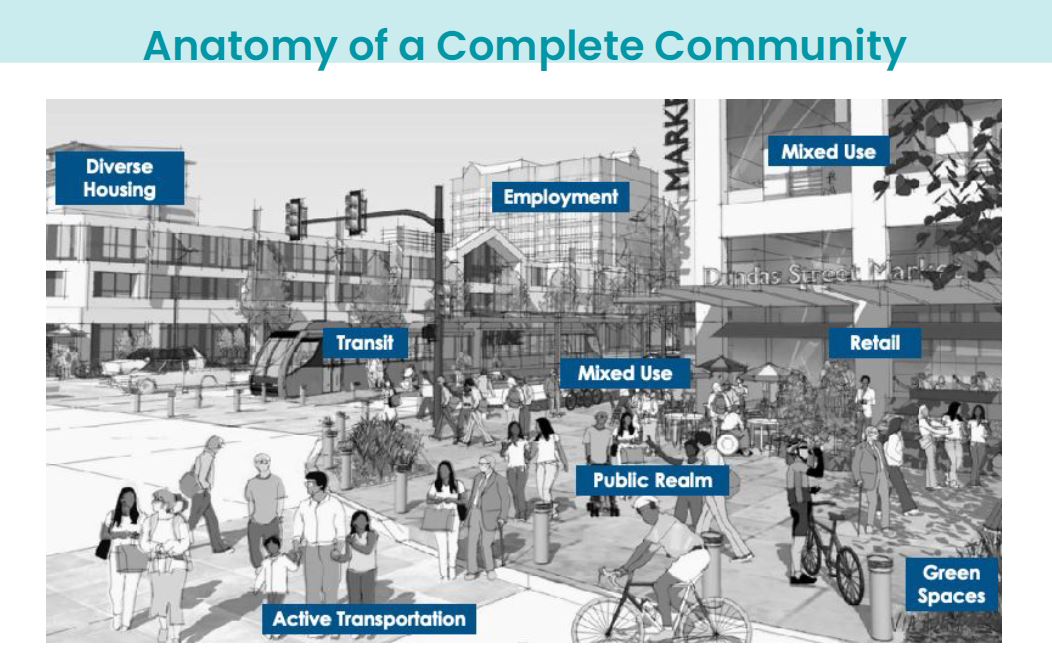The Town of Chapel Hill recently hosted a public information meeting to discuss the traffic impact of the proposed Aura project – a mixed-used development set for 1000 Martin Luther King Jr. Boulevard.
The applicant, Trinsic Development Services, is asking the town to rezone a 16.2-acre site from residential to office and institutional use with a mix of apartments, townhouses and a small amount of commercial space.
Chapel Hill Mayor Pam Hemminger said the special council session on Monday night was called so council members could make recommendations and get more information on the project before delving into formal public hearings next week.
The town first began discussing the proposed Aura development off Estes Road in May of 2020, where multiple council members expressed concern about additional traffic stemming from more housing.
The site proposal includes approximately 419 apartment units and townhomes and 650 total parking spots – with 360 spots confined to a parking deck at the center of the project. The Aura project also includes about 15,000 square feet of commercial space.

Overview of the proposed Aura project. (Photo via Town of Chapel Hill.)
To accommodate future residents and shoppers, the current Aura Chapel Hill development plan includes two access points from both adjacent roads on MLK and Franklin Street. It will be served by the North-South Bus Rapid Transit system.
There is still ample concern, however, about the two signals at Franklin Street and MLK and the intersection of Somerset and Estes Drive.
During Monday’s meeting, Craig Scheffler of infrastructure solutions firm HNTB shared some models projecting what traffic would look like, potential delays, and how Aura would affect the surrounding community.
Scheffler said the models reflect driver behavior as well as assessing the impact of bus stops and future traffic control measures – such as adding roundabouts or stop signs and widening roads. Before considering how Aura would affect the already-busy road’s traffic, Scheffler presented several models that detailed how current, planned developments will affect surrounding-streets during a typical weekday in the next few years.
To do this, the models assign each street a Level of Service rating between A-F. Each Level of Service is used to analyze traffic on roadways and intersections based on performance measure like vehicle speed, density, and congestion.
“The Estes and MLK falls to a Level of Service E,” Scheffler said. “From our model results in the afternoon, I’m not surprised by that at all in driving in that area in the afternoon many times. Estes and Somerset is not looking too good, and this is no surprise. When you add another approach and you don’t improve the intersection at all, the PM [traffic peak] gets a Level of Service F.”
As of April, there are 27 new Chapel Hill development projects either under town staff or town council review – with four more in the concept planning phase.
With all the new development, Scheffler said the models predict that Estes Drive and Franklin Street will be heavily impacted in 2024, with its Level of Service rating degrading from a C and D to a D and F in the projected model.
When showing how the proposed Aura development affected his models, Scheffler noted that the town’s proposed traffic developments did not drastically improve the roads’ Level of Service.
If Aura is built with no traffic improvements other than retiming the traffic signal at Estes Drive, traffic flow will still get a D rating. Even with town-recommended changes such as adjusting signal timing and lengthening the westbound right turn lane on Estes Drive, Scheffler said his models still only show a marginal traffic improvement.
“Basically, Estes Drive – those improvements – provide a sort of band aid,” Scheffler said. “They do improve things a little bit but are offset by the amount of traffic that’s being distributed by all those background developments or general traffic growth.”
If a southbound right turn lane is added on West Franklin Street, the models project only small benefits to the overall traffic flow. If a roundabout and traffic signal were added on Somerset Drive as another potential solution, Scheffler said there would be moderate improvement at best.
HNTB officials said to implement these traffic-calming measures would cost the town an estimated $100,000 for a 2-way signal and roughly $500,000 to $700,000 for a roundabout.
Chapel Hill Town Councilmember Michael Parker expressed concern that residents will not know what these Level of Service ratings really mean when it comes down to travel time, sitting in a car.
“So, if we try to translate this into ‘what does it feel like for somebody’ – so if you’re going west on Estes and approaching MLK, and you’re waiting for a light or you miss the light, how much of a delay is that?” Parker said.
Councilmember Jessica Anderson also wanted more clarity about how adding additional lanes to curb traffic backup would affect bicycle and pedestrian safety.
Councilmember Hongbin Gu said Scheffler’s presented models do not provide a complete picture about how traffic would be affected by Aura. She requested more data and an analysis – regarding how long the car queue will back up to each intersection and how frequently – to be provided at the next public hearing.
The council is set to host a public hearing on the proposed development May 12 and a second on May 26.
Read more about Chapel Hill’s Community Design Commissions’ discussion on the Aura development here.
Editor’s Note: An earlier version of this story’s headline said analysis of the proposed Aura Development led to “increased” congestion. The models presented Monday night do not reflect the project would worsen traffic conditions, but would largely maintain levels projected by 2024.
Lead photo via Town of Chapel Hill.
Chapelboro.com does not charge subscription fees. You can support local journalism and our mission to serve the community. Contribute today – every single dollar matters.

